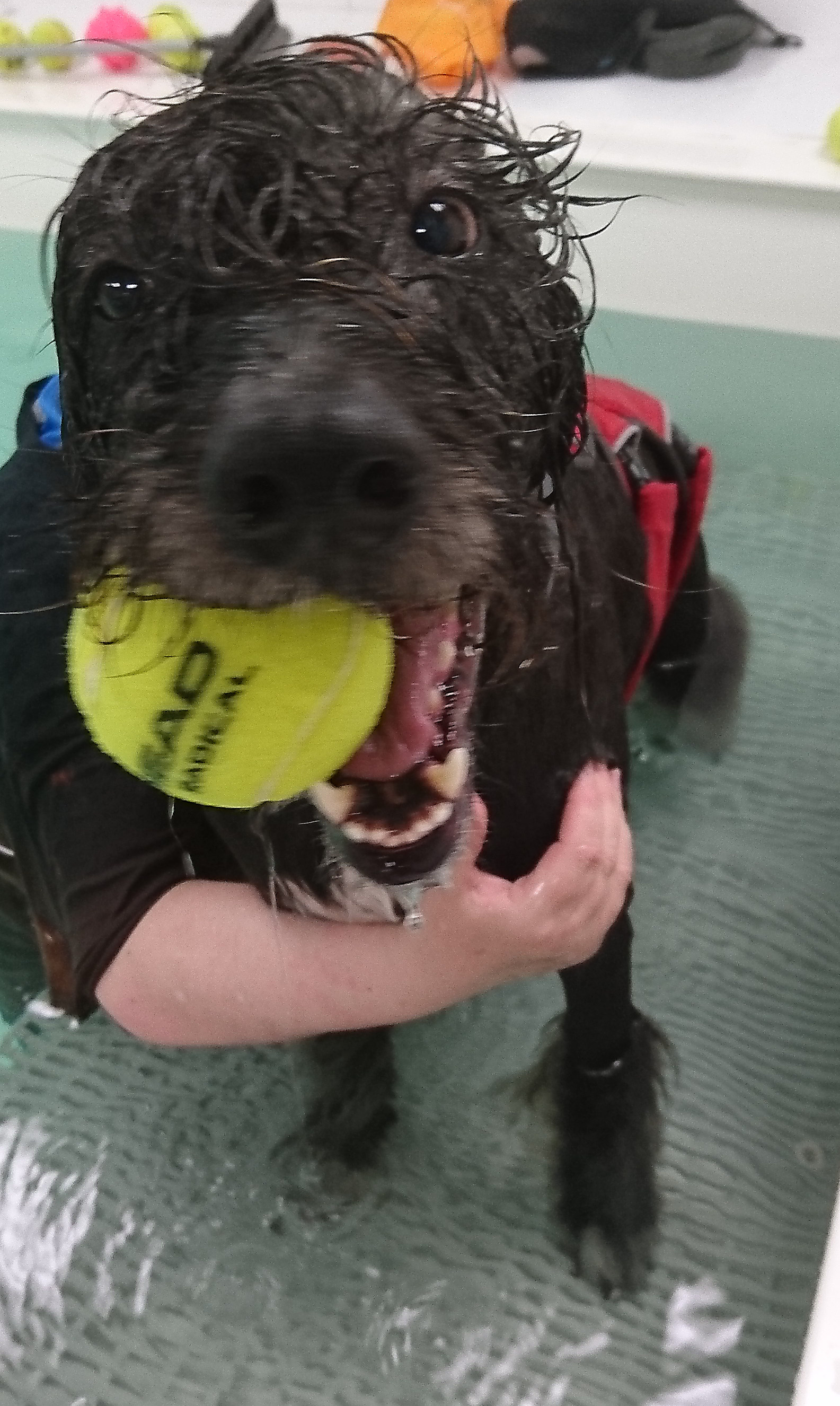Chesterfield Hydrotherapy
I have often heard about hydrotherapy but know nothing about it, so I contacted Chesterfield Hydrotherapy Referral Centre in Derbyshire.
Tell me a bit about your company.
Chesterfield Hydrotherapy Referral Centre first opened in 2014 and had just 1 dog being treated a week.
Now we have about 20 plus each week.
It was started by myself and is the only one in Chesterfield. We have a 5m x 2.4m pool which is big enough for even Newfoundlands to swim in.
Is a hydrotherapy centre a fun swimming pool for animals?
Yes it is for small animals, however so far we have only had dogs in it.
Although we did get asked to swim a pig and a cat. Cats sometimes enjoy swimming.
Or is it just for injury recovery?
We use hydrotherapy to treat dogs with injuries however, we also see dogs who just come because they like swimming and their humans want them to swim somewhere which is safe and clean.
We also see dogs whose humans what them to learn to swim or have more confidence in water.
What types of animals have been to your facility?
So far only dogs, however we could see cats, rabbits, or other small animals.
What is the benefits/reasons for animals using the facility?
That is not an easy question to answer in a few words.
However, basically it uses the properties of water such as Buoyancy, Hydrostatic Pressure, Cohesiveness, Resistance, Viscosity and Turbulence.
Also because the water is warm it relaxes the muscles and increases circulation and promotes healing.
Hydrotherapy also improves dogs mental health particularly when they are injured and can no longer run and play. Because swimming is non weight bearing the dogs can play with balls in the water without any force going through their joints. Hydrotherapy helps with conditions such as Arthritis, obesity, hip and elbow dyplasia, luxating patella, cranial cruciate disease, degenerative joint disease, CDRM, Wobblers, amputations, muscle tears, ligament injuries and pre and post operative conditioning to list a few.
What happens if an animal cannot swim?
Every animal that uses the pool will wear either a lifejacket or a harness.
The lifejacket gives the animal confidence that they will not drown but float.
Also I am in the pool with the dog and will be helping them whenever they need it to make sure that they can enjoy swimming.
I believe that pretty much every dog can swim after a fashion albeit with a lot of thrashing around and this means the dog could get itself to the edge of the water. The problem comes if they then can't get out. At the centre we have a ramp where the dogs enter and leave the pool safely and they are guided to this from their first swim.
Do you have special life vests/devices for animals?
Yes we have different sizes of lifejackets and harnesses as well as buster collars and ear wraps.
We also use arm bands for some dogs who need a bit more buoyancy.
If for recovery only, how to animals get to book in to your facility? Every dog we see has to have a vet referral or agreement for them to be treated at the centre even if they re only coming for fun. This is so that the vet makes us aware of anything that might be affected by the dog swimming, such as diabetes which means the dog has to follow a strict feeding and exercise routine which swimming could interfere with.
I know your facility is a serious place but do you have a funny story to share?
Yes it is a serious place, however, we want every dog/cat/animal to really enjoy the experience and have fun.
If they are having fun they often don't realise that they are also working and doing something that helps them.
Also if the dog is happy so is the owner.
We have lots of funny incidents and the dogs often make us laugh and smile. For example:
Bob who decided that he was a parrot and climbed on my shoulder.
Stanley who loves the chew stick so much that when I stood in the middle of the pool with it he just kept swimming round and round me.
Reg used to jump into the pool over the side, swim 2 circuits of the pool and then lay on the ramp just enjoying the warm water looking at us as if to say "what? I have done my bit!"
But often the funniest moments are when the dogs get things wrong like anticipating a toy being thrown and start to jump, try and stop themselves before falling head first into the water.
We laugh with them not at them and make sure they never come to any harm if this happens.
Indy one of our GSDs used to like standing on the ramp between swims and having a certain set of balls thrown to him. These balls could be filled with water and on catching them Indy would take great pleasure in squeezing the balls of that a jet of water came out which he would aim at either me or his owners, soaking them often in the face! Indy would play this game for ages and would probably have stayed all day playing it. The balls however, have now too many holes in them to be used like this anymore and unfortunately we are unable to get anymore.
Is there anything else that you feel is important everyone knows about that I never knew to ask you?
Just to let owners know that swimming is one of the best forms of exercise for dogs and has many benefits. It is especially good for puppies while they are growing and their delicate bones and joints are still forming and can be easily damaged. Also by getting a puppy used to swimming early, if it should ever need it for an injury it will enjoy it much quicker.
Why not have a go at hydrotherapy yourself - you might surprise yourself and really enjoy it just like Kit.



